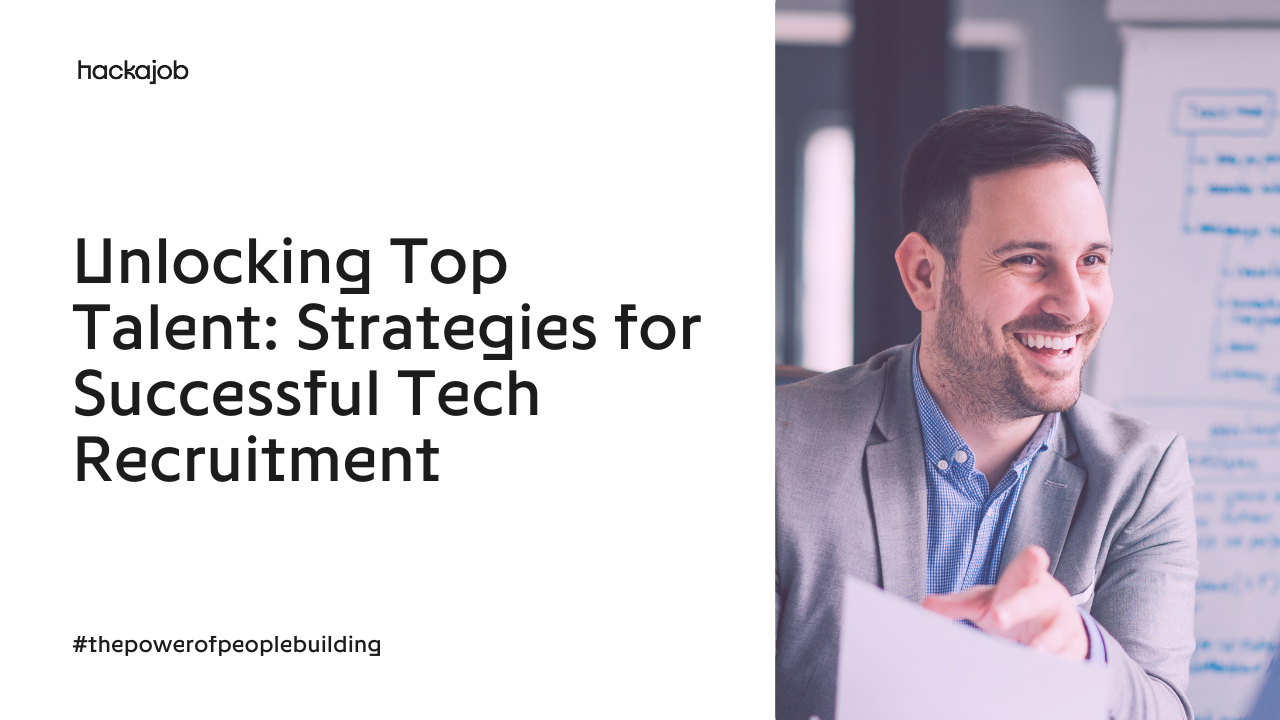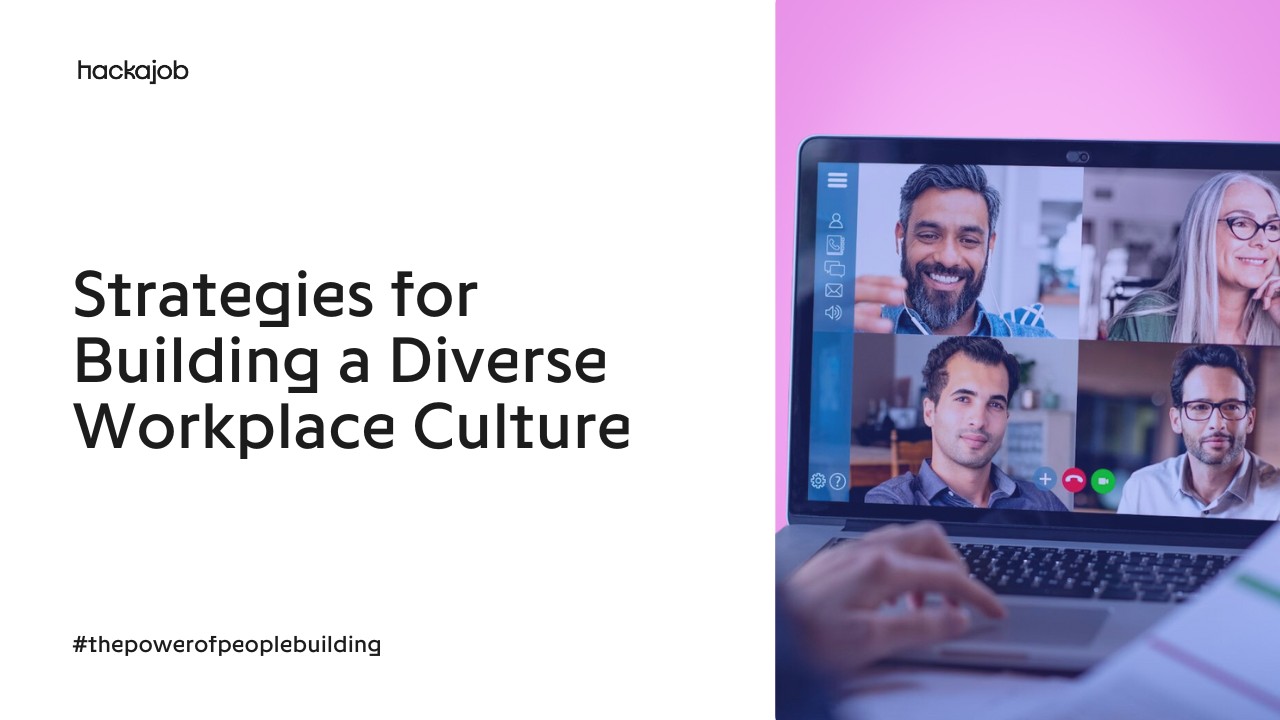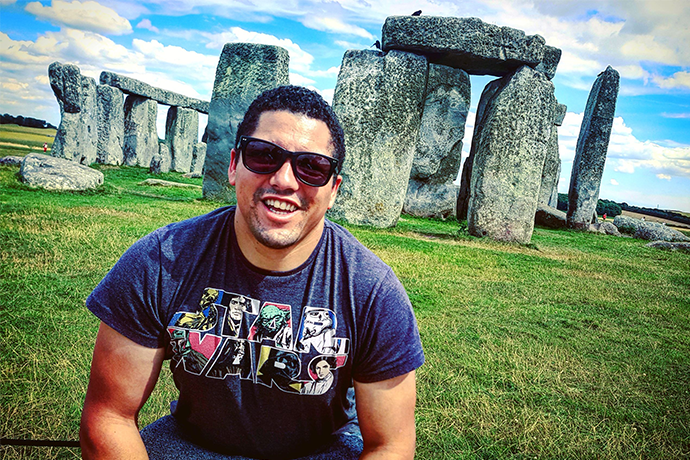Ayman Tahiri is Head of HR at hackajob. Dedicated to creating inclusive working cultures, Ayman is responsible for growing hackajob’s internal teams and is committed to continuously making it a great place to work. In his spare time, Ayman enjoys baking delicious treats (the whole of hackajob can vouch for his talent), spending time with his wife and doing gymnastics.
At hackajob, our mission is to eradicate bias entirely from the hiring process. We’re always considering how we can improve our processes and culture, especially considering that when it comes to internal recruitment; hiring requirements can often see companies on the back foot and needing someone urgently. Before you know it, you could end up hiring for hiring’s sake, or alternatively, have a vast team of people despite there being potential holes in your hiring process.
For us, this is something that we have chosen to actively avoid. We’re on a mission to make hiring fairer, faster and based on skills not CV’s, something that is reflected within our internal culture also. In fact, as Head of HR, it’s my utmost focus to build the most robust people processes so that any bias is removed from our own hiring processes wherever possible.
As with any fast-paced start-up, there’s a constant demand for new talent and everyone will tell you that they needed new people yesterday. A constant cycle of supply and demand, internally we find ourselves facing the same demand for finding the best talent on the market. So how did we go about solving this? Well to begin with, we made sure to spend time mapping out which talent we really needed, ensuring that we could build the fairest people processes in order to hire only the best candidates.
Diversity of people leads to a diversity of ideas and improved creativity. Whether you’re building great teams or equally forward-thinking products, it’s a huge plus. We’ve seen the benefits of this first-hand within our teams, and it’s made our company a more exciting, engaging and fun place to work in the long run.
Over the last 9 months, we’ve drastically increased our diversity levels and the results have been fantastic. One such achievement was increasing our female headcount by 250% and we now have our very own women’s committee, which is dedicated to supporting the presence and growth of female employees at hackajob. We’ve also benefited from better employee engagement, an overall increase in productivity and a broader range of skills being brought to the wider business.
Working across the business to really understand our requirements whilst also empowering our hiring managers, we thrive off making data-driven hiring decisions. In fact, we truly believe that a diverse workplace brings about so many benefits, that it’s a no-brainer for anyone hiring in today’s society.
Below, I’ve shared four tips that we use as part of our internal hiring processes at hackajob. They’re easy and effective for any start-up to implement as part of their overall hiring strategy:
Open your eyes to blind hiring
Blind hiring should be a key part of your recruitment process. More and more companies are moving towards adopting this method and whilst it can feel like a shock to hiring managers alike, adopting this process early on will pay dividends as you scale.
Stripping any personal information that may be unnecessary to the hiring process, the idea of blind hiring is often referenced in research into hiring practises by Claudia Goldin and Cecilia Rouse. Published in 1997, the research shows that where a screen was used as part of the audition process for an Orchestra, the probability of women progressing was increased by 50%. Using the same logic, we’re now seeing companies removing personally identifiable information (PII) such as name, date of birth and other potential demographic identifiers from CV’s and job applications.
Ultimately, we all want to hire the best talent and build fantastic teams, so we have to ask ourselves why someone’s name or where they’re from should affect their capability. Note: It shouldn’t. And it doesn’t just stop there. If you really want to hire unbiasedly, we recommend blocking out information such as university and school names too.
Disregard hobbies and interests
Should a candidate be disregarded just because they don’t have similar hobbies and interests to you, a hiring manager or your company as a whole? There are numerous studies (including this one by the Harvard Business Review), which indicate that employers at top law firms favoured a ‘higher class’ candidate based on subtle cues in their CV.
There’s also sufficient evidence to suggest that employers are more likely to hire people that are similar to them in terms of hobbies or interests. To avoid the risk of unconscious bias within your hiring process, scrap this section entirely from your interview process. After all, if it doesn’t have an impact on your business, it doesn’t matter what people get up to in their spare time.
Meritocracy NOT mediocrity
Whilst we think it’s crucial to omit a candidate’s education or where they went to school from your interview process, it doesn’t mean that you can’t assess their skillset. We recommend adding some kind of assessment (we call them ‘challenges’) to your recruitment process, to help ensure that you are placing focus on capability rather than university names.
Think about it. It’s hard to hire a developer without first verifying whether or not they are sufficiently proficient in your tech stack, and this same consideration should be applied to all the roles you’re hiring for. For example, Sales Executives may be great at selling themselves in an interview, but how do they translate to selling your product?
By adding a presentation-based task and even some in-depth role play, you can begin to understand how well a potential new hire could do in their role, including sales process, methodology and ultimately how capable they are of selling your product or service.
Opt for gender-Inclusive job descriptions
Avoid adding a list of requirements as long as your arm (you’re likely to scare away applicants), and make sure that your job description includes gender-inclusive language and doesn’t indicate any gender bias. There are numerous tools out there to help you do this, including Textio and Gender Decoder, which will help ensure that any job descriptions you write will attract a diverse range of applicants.
Standardise your questions, diversify your interviewers
In order to leave any biases (unconscious or not), it’s important to ensure that your interviewers themselves are diverse. We recommend that your interviewers have an equal gender split and are from the department potential candidates will be working for. By having people different people independently assess interviewees, you’ll minimise the risk of hiring a team of clones.
Have a clear interview assessment criteria so that all candidates are measured fairly and against the same requirements. Standardise every part of the process including feedback, debriefing and assessment to remove bias wherever possible throughout the entire process. Keeping a structure where candidates are asked the same predefined questions will help keep the primary focus of the interview about the key requirements that will directly impact performance; and nothing more.
Ultimately, what we’ve outlined above is just a very small part of what you can be looking at to improve your own internal recruitment processes. There is always more work to be done to create fairer hiring practises, as well as a more diverse and inclusive workplace.
The good news? By reading this article, you’ve shown commitment to the cause. And as with anything, making your workforce more inclusive and diverse will include lots of trial and error and being completely honest; you’re likely to face a steep learning curve.
Remember: DON’T be afraid to experiment and DO be sure to educate others, challenging bias wherever and whenever you see it.





